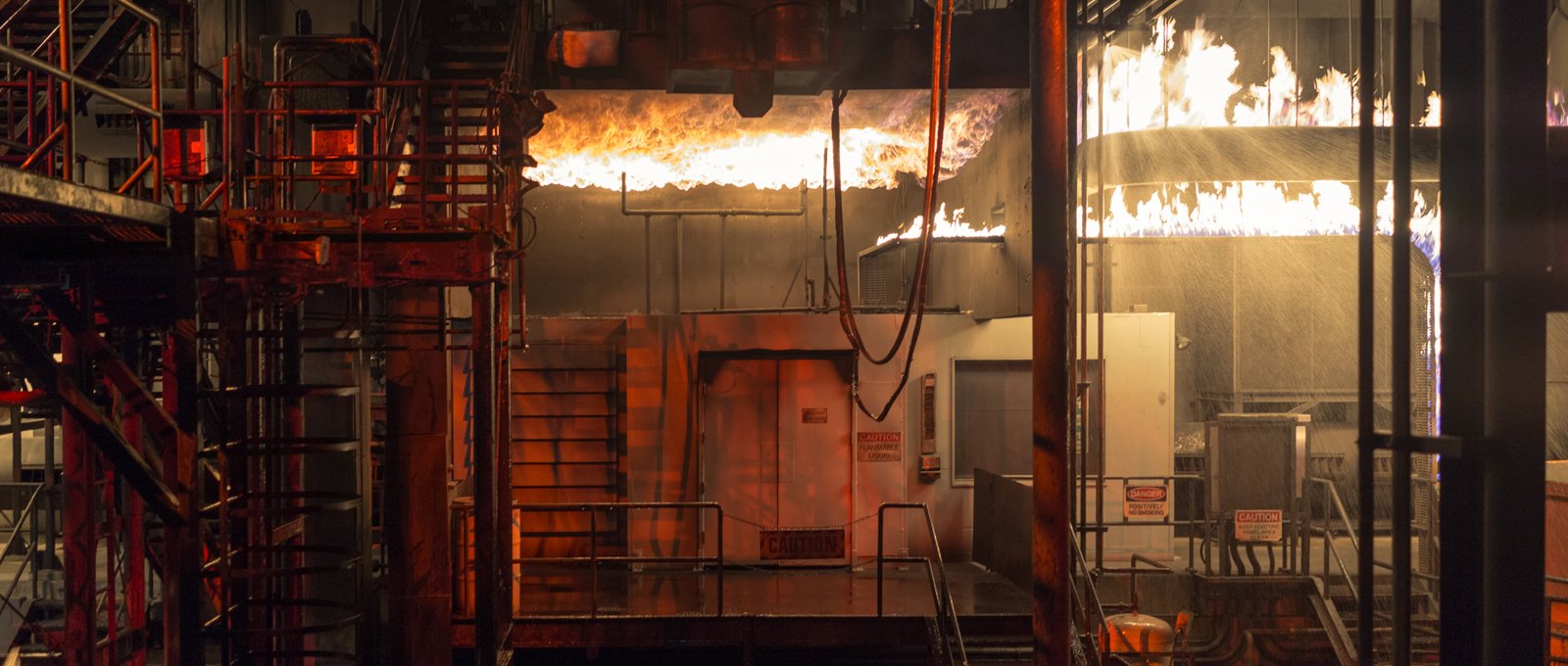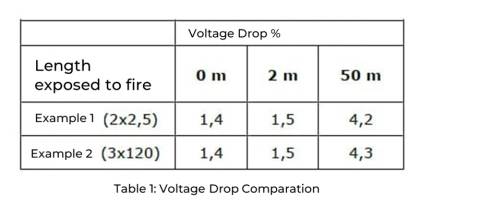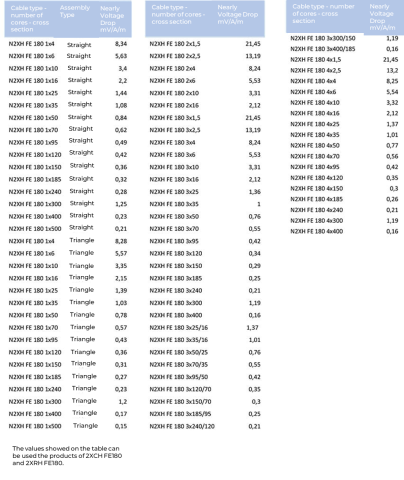
VOLTAGE DROP DURING A FIRE
1. Introduction
During a fire, the cable temperature exceeds the safe operating range specified in the standards. Unless special materials are used, the maximum operating temperature can be considered as 90°C for XLPE insulation material and 70°C for PVC insulation material. The voltage drop at high temperatures will be greater than at 90°C. The size of the load is an important factor in voltage drop, and the worst-case scenario is when a long section or the entire cable is exposed to fire, rather than just a partial section. In such cases, depending on the length exposed to fire, it is necessary to increase the conductor cross-section by 1-2 sizes, as shown in the examples below.
2. Calculations of Voltage Droping a Fire
Voltage drop calculation is easy under normal conditions. This calculation can be done on the website www.prysmianperformanstesti.com or through the CableApp application available on Android, iOS. These calculations are based on the maximum allowable operating temperatures.
When a cable is exposed to fire, the conductor temperature increases, which in turn increases the conductor resistance. The increase in resistance causes a greater voltage drop.
The difficulty in calculating voltage drop during a fire arises from not knowing how much of the cable is exposed to fire and the difficulty in determining the conductor temperature along the line. Therefore, various assumptions must be made. To understand how the length exposed to fire affects the voltage drop, necessary calculations for two different cross-sections are provided below. In the calculations, it is assumed that a load of 5 A and 200 A is carried under 240 V voltage.
Voltage Drop (VD)
VD = KGGDK x A x L
VD: Voltage drop in V
VDCAC: Voltage drop coefficient according to cross-section in mV/A/m
A: Current carried in A
L: Line length in m
0.001: Conversion from mV to V
Example 1: Let’s assume a load of 5 A is carried over 50 m with a 2XH FE 180 type, 2x2.5 mm² cross-section cable.
Voltage drop under normal conditions (VD);
VD = 13.19 mV/A/m x 0.001 x 5 A x 50 m = 3.3 V
VD ratio = 3.3/240 = 1.4%
The number 13.19 (mV/A/m) is the voltage drop coefficient at 90°C for 2XH FE 180 2x2.5 mm².
Example 1-1;
If 2 meters of the same cable is exposed to 750°C heat, and the remaining part is at 90°C; VD = 13.19 x 0.001 x 5 x 48 + 13.19 x 0.001 x 3.0342 x 5 x 2 = 3.6 V VD ratio = 3.6/240 = 1.5% 3.0342 is the correction factor for 750°C (calculation provided at the end of the page).
Example 1-2:
If 50 meters of the same cable is exposed to 750°C; VD = 13.19 x 0.001 x 3.0342 x 5 x 50 = 10 V
VD ratio = 10/240 = 4.2%
Example 2:
Let’s assume a load of 200 A is carried over 50 m with a 2XH FE 180 type, 3x120 mm² cross-section cable.
Voltage drop under normal conditions (VD);
VD = 0.34 x 0.001 x 200 x 50 = 3.4 V VD ratio = 3.4/240 = 1.4% The number 0.34 (mV/A/m) is the voltage drop coefficient at 90°C for 2XH FE 180 3x120 mm².
Example 2-1:
If 2 meters of the same cable is exposed to 750°C heat, and the remaining part is at 90°C;
VD = 0.34 x 0.001 x 200 x 48 + 0.34 x 0.001 x 3.0342 x 200 x 2 = 3.7 V
VD ratio = 3.7/240 = 1.5% 3.0342 is the correction factor for 750°C.
Example 2-2:
If the entire 50 m of the same cable is exposed to 750°C;
VD = 0.34 x 0.001 x 3.0342 x 200 x 50 = 10.3 V
VD ratio = 10.3/240 = 4.3%
As can be seen from the examples above, voltage drop increases under fire conditions. In a single-phase line at a voltage level of 240 V, it is observed that the voltage drop does not change much when a partial length is exposed to fire. The table below shows the voltage drop under normal conditions and the calculated voltage drops during a fire.

If the voltage drop is not desired to be more than 4%, in cases where 50 m of cable is exposed to fire, the conductor cross-section should be selected as 4 mm² instead of 2.5 mm² in example 1, and 150 mm² instead of 120 mm² in example 2.
If calculations are redone for the new cross-sections:
For 4 mm²:
VD: 8.24 x 0.001 x 3.034 x 5 x 50 = 6.3 V VD ratio = 6.3/240 = 2.6%
For 150 mm²:
VD: 0.29 x 0.001 x 3.034 x 200 x 50 = 8.8 V VD ratio = 8.8/240 = 3.7%
To calculate the voltage drop, it is necessary to know the cable length, the current carried, the fire temperature, the length exposed to fire, the mV/A/m value at 90°C from Table 1, and the correction factor between 90°C and the fire temperature.
The correction factor calculation for 750°C is provided below:
0.00393/°C is the correction coefficient for copper.


Türk Prysmian Kablo ve Sistemleri A.Ş.
e-posta: [email protected]


